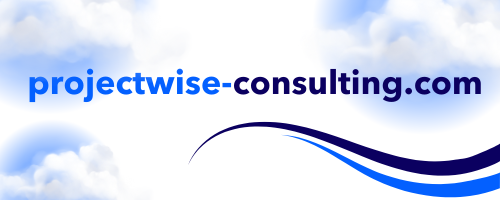
In a crowded boardroom on the fifteenth ground, a second of reality unfolded.
The corporate’s CEO turned to the Chief Studying Officer, the important thing determine answerable for the corporate’s studying and growth technique, and requested, “Do we all know what abilities we even have and what we’re lacking?” The room went silent.
This isn’t fiction. It’s an actual situation taking part in out in firms worldwide. The organizations which can be successful in a aggressive market aren’t simply asking about job titles; they’re laser-focused on abilities. Welcome to the period of the Abilities-Primarily based Group (SBO) – a game-changing method that’s reshaping Studying and Growth (L&D) technique from the bottom up.
What Is a Abilities-Primarily based Group?
Think about this: as a substitute of hiring for roles, your group builds dynamic groups primarily based on who can truly do the work and who has the abilities to resolve issues, innovate, and lead.
That’s the essence of a skills-based group. It redefines how firms rent, develop, and deploy expertise, specializing in abilities, not job titles. This shift not solely empowers staff to interrupt free from inflexible roles and repeatedly evolve but in addition permits companies to stay agile within the face of change. It’s a mannequin that evokes and motivates, inserting the facility of progress and adaptation within the fingers of each worker.
Key traits of skills-based organizations:
- Abilities are the inspiration for recruitment, inside mobility, and promotions.
- Studying paths are tailor-made to construct capabilities, not simply full programs.
- Roles are versatile and ceaselessly reshaped round strategic priorities.
- Groups are shaped primarily based on the best-fit abilities, not simply conventional job descriptions.

Why SBOs Are a Sport-Changer for L&D
Shifting to a skills-based mannequin transforms how L&D groups should function. It necessitates a extra strategic and data-driven method to workforce growth, difficult groups to rethink their operations and have interaction in a extra proactive, forward-thinking method.
1. Upskilling and Reskilling: No Longer Elective
In a world the place AI, automation, and digital fluency are desk stakes, organizations can’t afford to attend for workers to “catch up.” Staying aggressive means embedding studying instantly into the rhythm of labor and technique.
The method begins by collaborating with enterprise models to conduct common analyses of abilities gaps, figuring out areas the place present capabilities are inadequate, and predicting the place future competencies might be required. This ongoing evaluation ensures that the group’s expertise pool is at all times aligned with its strategic targets.
In an effort to implement this growth successfully at scale, it’s important to undertake versatile, high-impact codecs similar to microlearning modules (brief, centered studying models) and immersive simulation labs (digital environments that simulate real-world situations). These approaches empower staff to quickly domesticate related experience whereas staying centered on their core tasks.
2. Competency Frameworks: Your Strategic Blueprint
Abilities-based methods want construction, and that’s the place competency frameworks show important. These frameworks act as a map, linking particular behaviors and capabilities to broader enterprise targets, making certain that studying initiatives serve a transparent, measurable goal.
By defining what success seems like in every function, competency frameworks make clear expectations and illuminate promotion pathways. They function the spine for designing abilities assessments and personalised growth plans, enabling learners to advance with intention. Maybe most significantly, they permit organizations to precisely monitor return on funding, utilizing real-time knowledge to measure progress, efficiency, and impression.

Personalised Studying at Scale
In a skills-based group, personalised studying isn’t only a perk; it’s a necessity. Staff want focused growth alternatives primarily based on their present ability ranges, profession targets, and efficiency knowledge.
The best way to implement personalised studying:
- Use AI-powered platforms to suggest programs and content material.
- Let learners set particular person targets and monitor progress in actual time.
- Provide versatile studying codecs: on-demand video, teaching, simulations, and so on.
Finest practices for personalization:
- Begin with abilities knowledge, not roles, when designing curricula.
- Phase learners by expertise degree, studying type, and job operate.
- Constantly replace studying content material primarily based on person engagement and suggestions.
The Coronary heart of It All: Constructing a Abilities Taxonomy
Image a blueprint that exhibits you each ability your workforce wants—now and sooner or later. That’s your abilities taxonomy.
It’s the connective tissue between hiring, growth, and succession planning.
The best way to Construct One:
- Contain cross-functional leaders to align enterprise targets with studying priorities
- Categorize abilities into technical, management, digital, and interpersonal
- Tie every ability to actual outcomes: buyer satisfaction, innovation, income progress
Rethinking Metrics: Abilities Over Seat Time
Neglect hours logged in a course. That’s yesterday’s metric.
Abilities-based organizations measure what issues:
- Time to ability proficiency
- Inner promotion charges
- Impression of coaching on efficiency KPIs
- Learner engagement and ability adoption charges
When L&D leaders align metrics with outcomes, they earn a seat on the strategic desk.
Your First Steps Right into a Abilities-Primarily based Future
Beginning your SBO journey doesn’t require an enterprise overhaul. It begins with intention and some vital strikes.
Begin Right here:
- Audit your L&D applications: Are they aligned to precise abilities wants?
- Unite stakeholders: Carry HR, L&D, and enterprise leaders collectively round a shared abilities imaginative and prescient
- Develop or refine your competency framework: Let it information each determination
- Leverage know-how: Use platforms that allow personalised studying and real-time abilities monitoring
- Pilot and scale: Begin small. Show impression. Then scale boldly
Why Abilities Are the New Technique
This isn’t nearly coaching. It’s about reworking how your group thinks about expertise.
Whenever you prioritize abilities, you unlock a extra resilient, agile, and empowered workforce, and L&D turns into a catalyst for enterprise progress.
The query isn’t when you’ll transfer towards a skills-based group. It’s when. And for visionary L&D leaders, that point is now.

